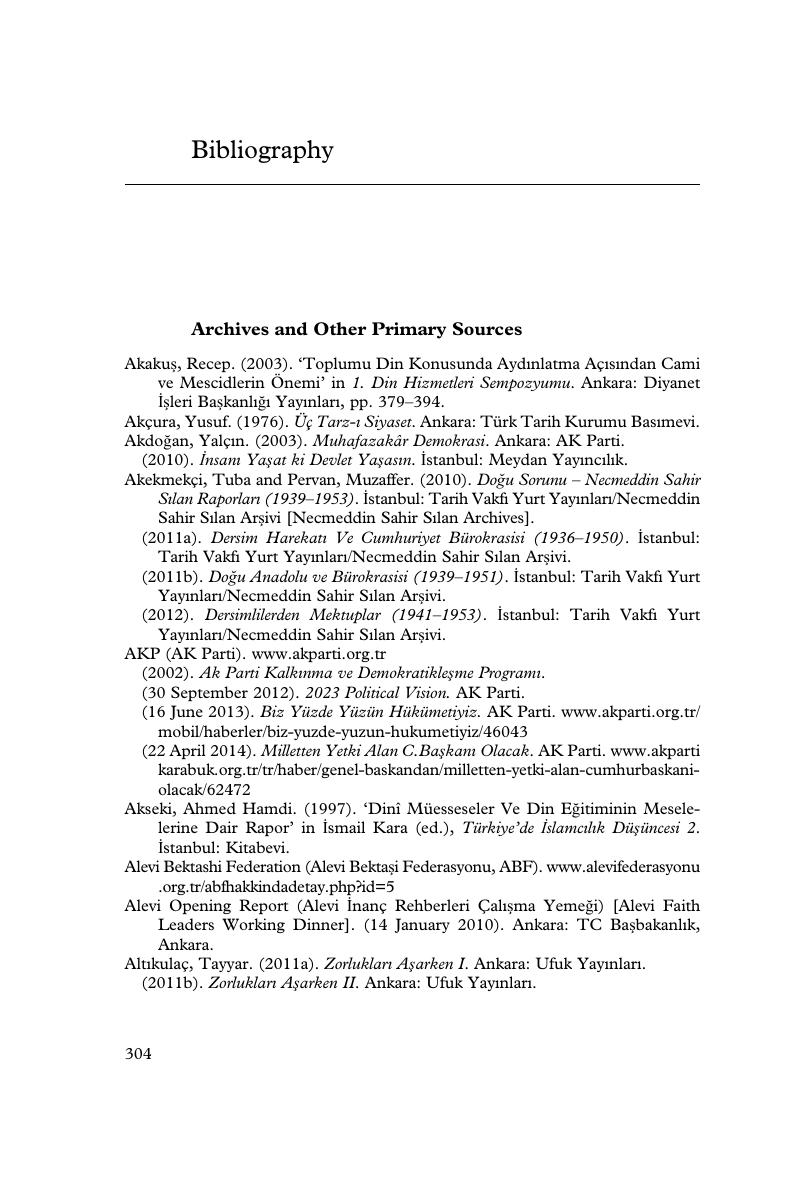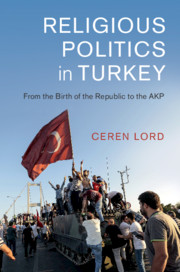Book contents
- Religious Politics in Turkey
- Cambridge Middle East Studies
- Religious Politics in Turkey
- Copyright page
- Contents
- Figures
- Tables
- Preface
- Acknowledgements
- Abbreviations
- Introduction
- 1 How Religious Majoritarianism Was Institutionalised in the Early Republic
- 2 The Struggle within the State
- 3 Shaping the Nation
- 4 The Expansion of the Religious Field in the Multi-Party Era
- 5 The Islamist Movement in Turkey and the Emergence of the AKP
- 6 The Rise of the AKP and the Struggle within and for the State since 2002
- Conclusion
- Appendix: Presidents of the Diyanet
- Bibliography
- Index
- Series page
- References
Bibliography
Published online by Cambridge University Press: 02 November 2018
- Religious Politics in Turkey
- Cambridge Middle East Studies
- Religious Politics in Turkey
- Copyright page
- Contents
- Figures
- Tables
- Preface
- Acknowledgements
- Abbreviations
- Introduction
- 1 How Religious Majoritarianism Was Institutionalised in the Early Republic
- 2 The Struggle within the State
- 3 Shaping the Nation
- 4 The Expansion of the Religious Field in the Multi-Party Era
- 5 The Islamist Movement in Turkey and the Emergence of the AKP
- 6 The Rise of the AKP and the Struggle within and for the State since 2002
- Conclusion
- Appendix: Presidents of the Diyanet
- Bibliography
- Index
- Series page
- References
Summary

- Type
- Chapter
- Information
- Religious Politics in TurkeyFrom the Birth of the Republic to the AKP, pp. 304 - 353Publisher: Cambridge University PressPrint publication year: 2018



